Cultivation of large-flowered magnolia

Large-flowered magnolia is a vigorous evergreen tree with glossy emerald foliage. In May, this highly decorative plant is covered with porcelain-white, very large flowers, exuding a strong vanilla-citrus aroma. Consider what else is remarkable for large-flowered magnolia, in what conditions it grows, and also whether it is possible to grow it on a personal plot, and how to care for it.
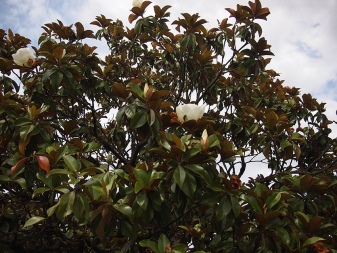
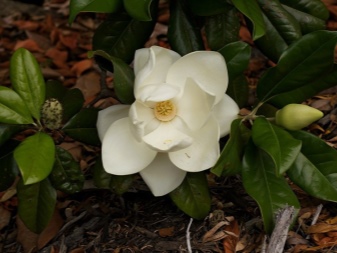
Description
Large-flowered magnolia (grandiflora) is a type of woody flowering plants belonging to the magnolia family. The species is represented by evergreen trees, which, unlike deciduous ones, retain their foliage throughout the year.
The natural habitat of Grandiflora is the southeastern United States. It is also found in southern Europe, as well as in the countries of Western and Central Asia.
The height of an adult large-flowered magnolia can vary from 20 to 30 meters. The shape of the tree crown is wide-pyramidal, spreading. The trunk is powerful, erect, covered with gray-brown bark.
The trunk diameter of an adult tree can reach 1.2-1.4 meters.
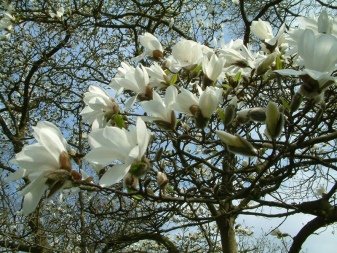
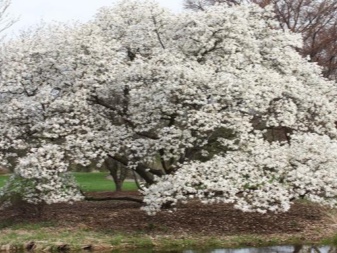
The branches of Grandiflora are elastic, strong, densely leafy, covered with gray-green or reddish-gray bark. Leaves are elongated, pointed, glossy on the outside, up to 25 centimeters long, deep green in color. The underside of the leaves is reddish brown, smooth or slightly pubescent.
Grandiflora enters the flowering phase in May. During this period, the tree is covered with numerous large flowers. Flower petals are ovoid or oval in shape with a slightly pointed apex. The flowers exude a strong and pleasant aroma with lemon-vanilla notes. The diameter of one flower can be 20-25 centimeters. Magnolia bloom ends in September. In October, the plant enters the fruiting phase, which lasts until November. At this time, in place of withered flowers, voluminous, many-leaved, egg-shaped fruits are formed. Magnolia seeds are small, conical or elliptical, covered with a bright scarlet shell.
Large-flowered magnolia is widely used in ornamental gardening and landscape design. Its fragrant flowers, leaves and young shoots are used as raw materials for the preparation of a valuable essential oil.

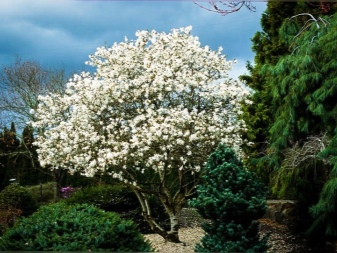
Planting and leaving
Before planting large-flowered magnolia, you need to choose a well-lit place for it on the site, protected from drafts and cold winds. It is not allowed to plant seedlings in blown cold areas, as well as in places where water stagnates.
A favorable period for planting young plants is late spring - early summer (after the threat of night frosts disappears). Magnolias planted during this period will be able to fully adapt in a new place and by autumn to build up a sufficient root mass. It is allowed to plant young plants in autumn, in the second half of October.
Grandiflora prefers light fertile soils with a neutral or slightly acidic reaction.
Areas with heavy clayey and, conversely, very loose sandy soils are categorically unsuitable for planting and growing it.

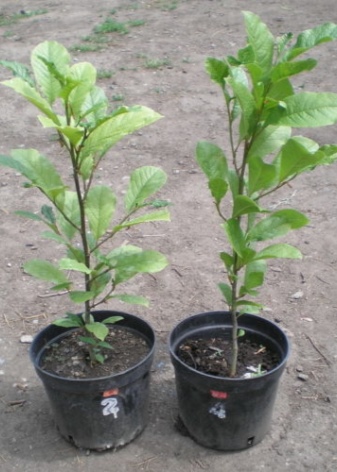
After choosing a place for placing seedlings, they begin to arrange the planting pit, the recommended dimensions are 60x60x60 cm. A layer of drainage materials is laid at the bottom of the pit - gravel, large pebbles, pieces of brick.
A nutritious soil mixture is poured over the drainage, consisting of garden soil with the addition of compost, peat and sand. A seedling is placed vertically in a pit along with a lump of earth on the roots, and soil mixture is poured over it from all sides. During planting, make sure that the root collar of the plant is at a height of no more than 3 centimeters from the surface of the earth. After planting, the young plant is watered, and the ground around it is sprinkled with mulch.

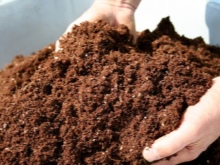
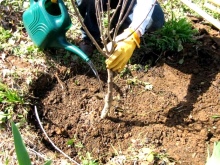
The main care for large-flowered magnolia is regular watering, periodic feeding, sanitary pruning.
This plant should be watered as the soil surface dries up in the near-stem circle. It is not worth allowing water to stagnate around the magnolia, since its root system painfully tolerates waterlogging of the soil.
Large-flowered magnolia is fed from the third year after planting. During the period of growing green mass and flowering, this plant spends a large amount of resources, which can lead to a decrease in its resistance to pathogens and pests.
For feeding, a mineral-organic solution is used, consisting of such components as:
-
water - 10 l;
-
rotted manure - 1 kg;
-
saltpeter - 20 g;
-
urea - 15 g.

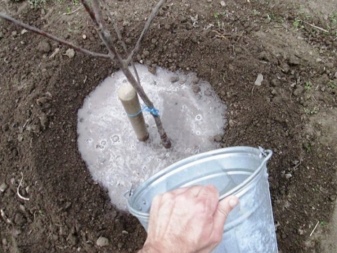
The recommended consumption rate is 3-4 buckets of solution per 1 adult tree. In total, during the season (from spring to autumn), magnolia is fed 2-3 times.
After the plant has faded, gardeners carry out sanitary pruning. During this procedure, dry, crooked and excess branches are cut out, thickening the crown. Places of cuts are treated with garden varnish.
Considering that magnolia is a thermophilic plant, it is recommended to cover it for the winter. For arranging shelters, burlap and spruce branches are used. On the eve of winter, the trunk circle is covered with mulch to protect the roots from freezing.
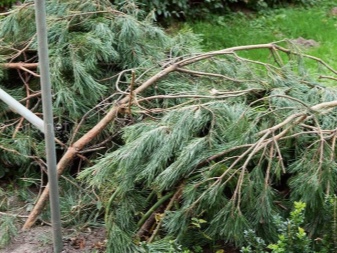

Reproduction
Propagate grandiflora vegetatively using cuttings. You can also grow her seedlings at home from seeds.
With the seed method of reproduction of magnolia, the planting material is stratified within 20-30 days. At the time of stratification, the seeds are placed in a container with wet sand, which is sent to the refrigerator on the lower shelf. After stratification, seeds are germinated in a tall container filled with moist substrate.
The contents of the container are regularly moistened, preventing the substrate from drying out.
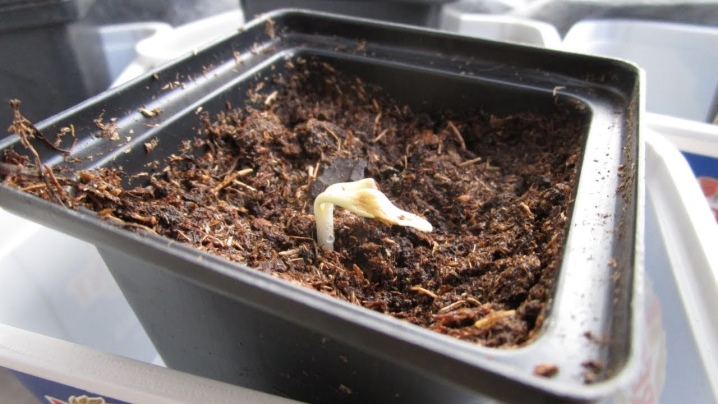
After emergence, the containers are placed in a place with soft diffused light, protected from drafts. The grown seedlings are planted in open ground in spring only after the threat of frost has disappeared.
Magnolia cuttings are harvested in the spring before flowering. Cuttings with multiple buds and a lignified top and green bottom are ideal for rooting. At the end of June, they are planted in a greenhouse with sand or peat-sand mixture. For quick rooting of cuttings in a greenhouse, high humidity and a stable air temperature are maintained at a level of 21-24 ° C (but not more than 26 ° C). A sign of successful rooting of cuttings will be the leaves unfolded from the buds.
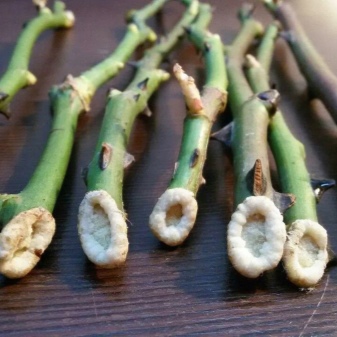

Diseases and pests
A change in soil acidity can cause chlorosis in magnolia. With this problem, the leaves of the plant begin to turn yellow, but their veins remain green. You can eliminate the problem by introducing sour peat or coniferous humus into the soil.
Magnolias are often affected by mealybugs and peach (greenhouse) aphids. Both pests feed on cell juices, which can cause the foliage to dry out and die, and in some cases even the death of the entire plant. For the destruction of parasites, a total treatment of magnolia with drugs "Aktara", "Fitoverm", "Aktellik" is used.
Large-flowered magnolias grown in the northern regions are often affected by fungal diseases - powdery mildew, gray botrytis, and rot.In this case, it is possible to save trees from death only under the condition of immediate and comprehensive treatment. It provides for the removal of the affected parts of the plant, the treatment of trees with fungicidal preparations with a simultaneous reduction in watering.
For the treatment of magnolias, drugs such as "Gamair", "Fitosporin" are used.
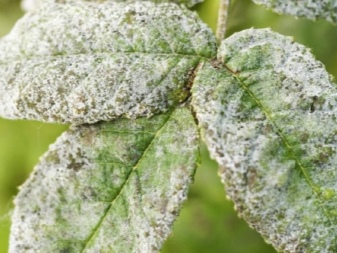
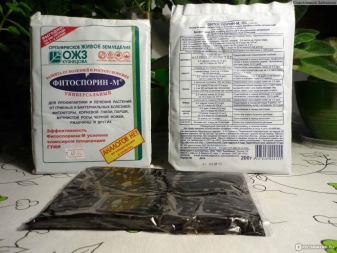
Examples in landscape design
Magnolia large-flowered looks great both in single and in group plantings. On the site, it can be planted with decorative conifers, since they also prefer to grow on slightly acidic soils. In this case, large-flowered magnolia can be planted along with low thuja or juniper.
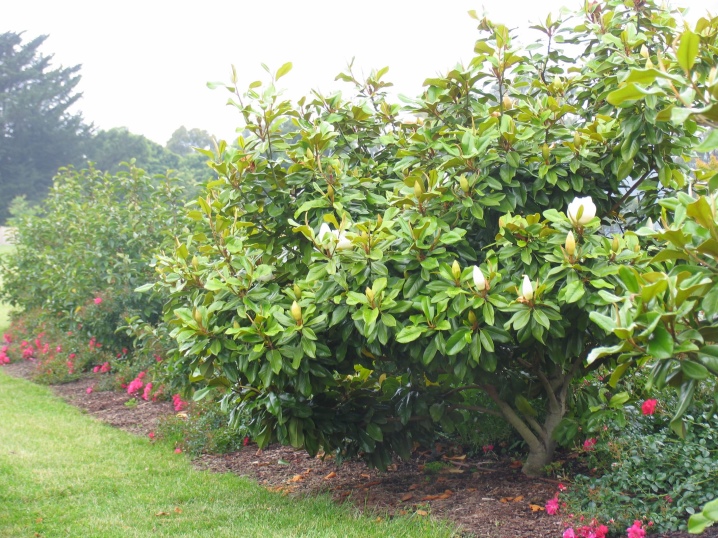
Grandiflora looks spectacular surrounded by flowers - peonies, nasturtiums, chrysanthemums. It is organically combined with other woody plants - small-leaved linden, viburnum.

In large tracts of magnolias, large-flowered are often used to create beautiful alleys. Similar alleys can be found in popular Black Sea resorts. The most famous example here is an alley of large-flowered magnolias located in the territory of the protected area of the resort city of Sochi (Riviera Park).
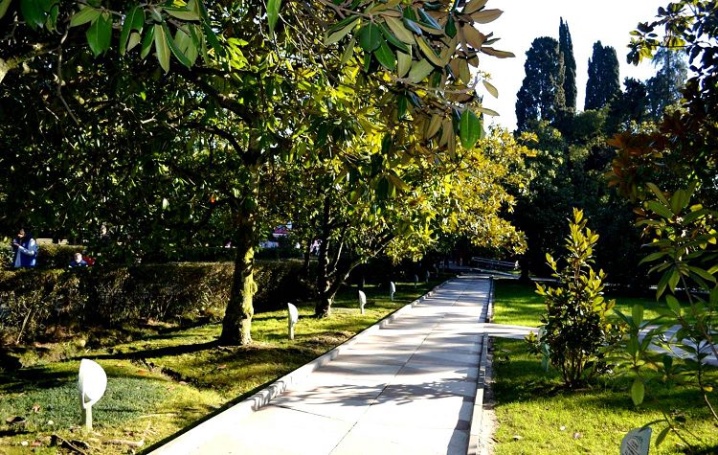
How to germinate magnolia from seeds, see the video.

































































The comment was sent successfully.